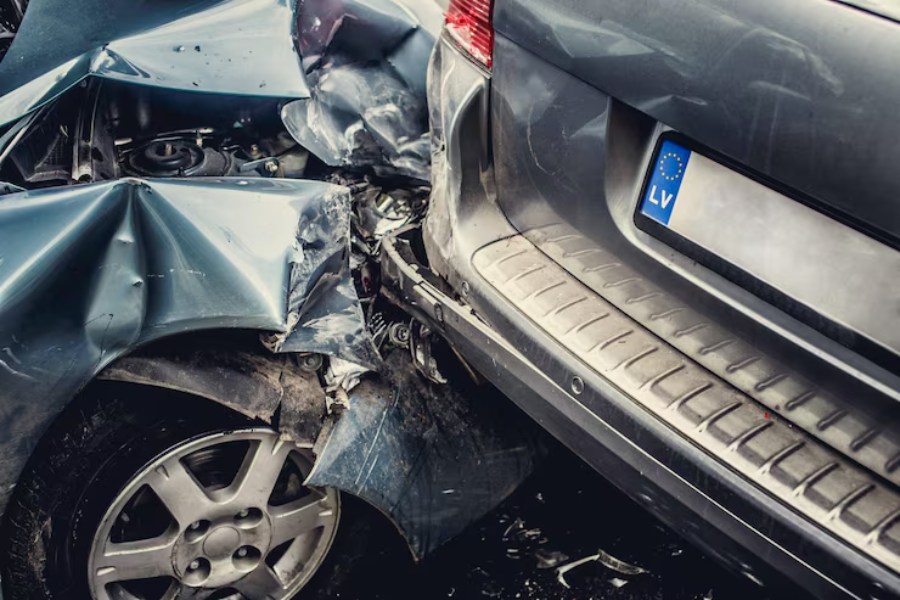A car crash can happen in an instant, leaving drivers disoriented, anxious, and unsure of what to do next. In those first few moments, the decisions you make can significantly impact your safety, your rights, and any future claim you may need to file. While no one ever expects to be in a collision, knowing the correct steps to take can make all the difference in protecting yourself both medically and legally. Whether it’s seeking help, gathering evidence, or contacting a car accident lawyer, having a clear plan can help you navigate an otherwise overwhelming experience with confidence and control.
Step 1: Ensure Safety Above All Else
The priority after any accident is safety. If you can move and it’s safe to do so, check on yourself and others involved for injuries. Turn on your hazard lights, and if possible, move your vehicle to a safe area out of traffic. If anyone is injured, call emergency services immediately. Even minor collisions can lead to hidden injuries such as concussions or whiplash, so it’s always best to err on the side of caution and seek medical attention right away.
Staying calm is equally important. Panicking or reacting impulsively can worsen the situation. Take a few deep breaths before stepping out of the vehicle, and avoid making sudden movements if you feel pain. Remember that shock can mask injuries, so you may not realize the full extent of harm until hours later.
Step 2: Contact the Police and File a Report
Even if the accident seems minor, always contact the police. A formal police report serves as an essential piece of evidence in any insurance or legal claim. The report typically contains the details of the accident, statements from witnesses, and observations from officers at the scene, all of which help establish what happened and who was at fault.
When speaking with the police, be factual but avoid speculating or admitting blame. Stick to what you know — where it happened, what you saw, and how you felt. Statements made in the heat of the moment can be misunderstood or used against you later. If the police cannot come to the scene, you can usually file a report at a local station or through an online system afterward, but it’s best to do it as soon as possible while the details are still fresh.
Step 3: Gather Information and Evidence
Once the scene is secure and the police are on their way, start collecting information. Exchange details with the other driver, including names, contact numbers, license plate numbers, insurance information, and vehicle registration. If there are any witnesses nearby, politely ask for their names and contact details as well. Witness testimony can be extremely valuable in supporting your version of events.
Next, take photos or videos of the scene from multiple angles. Capture vehicle damage, skid marks, traffic lights, weather conditions, and any injuries. These visual records can help reconstruct the incident later, especially if disputes arise. The more evidence you can gather on-site, the stronger your position will be when dealing with insurers or legal representatives.
Step 4: Seek Medical Attention Immediately
Even if you feel fine, always get checked by a healthcare professional as soon as possible. Some injuries, such as internal bleeding, soft-tissue damage
, or concussions, may not show symptoms right away but can have serious long-term effects. Having a medical record created immediately after the crash provides crucial documentation that links your injuries to the accident, which can help if you need to make a compensation claim later.
Make sure to follow your doctor’s recommendations and attend all follow-up appointments. Insurance companies often review medical reports closely when determining payouts, so consistent documentation helps strengthen your case.
Step 5: Notify Your Insurance Provider
Report the accident to your insurance provider as soon as possible, even if you believe the other driver was at fault. Most policies require prompt notification, and delaying could affect your eligibility for coverage. When giving your account, remain factual and honest, but avoid making assumptions about fault or liability until the investigation is complete.
If the other party’s insurer contacts you, it’s often best to consult a legal professional before providing any statement. Insurance adjusters may try to minimize payouts or get you to accept early settlements that do not fully cover your damages. Having an advocate to review communications can prevent costly mistakes.
Step 6: Consult a Legal Professional
After you’ve addressed immediate safety and reporting requirements, it’s time to speak with a qualified legal expert. Car accident cases can become complex, especially if there are disputes over fault, injuries, or compensation. A legal professional can help you understand your rights, deal with insurance companies, and ensure that any settlement reflects the full extent of your losses.
Step 7: Keep Records and Follow Up
Finally, maintain organized records of everything related to the accident — police reports, medical bills, repair invoices, and communication with insurers. These documents can serve as evidence if your case progresses to negotiation or court proceedings. Keeping a detailed log of your symptoms, medical treatments, and any workdays missed due to injury can also help demonstrate the financial and personal impact of the accident.
Conclusion
Being involved in a car accident is a stressful and often frightening experience, but knowing what to do in those critical moments afterward can protect your health, your finances, and your legal rights. By staying calm, seeking medical help, collecting evidence, and contacting both your insurer and a trusted legal professional, you take control of the situation rather than leaving it to chance. The right approach — and the right guidance — ensures that you recover not just physically, but also legally and financially, from an event that can otherwise have lasting consequences.


